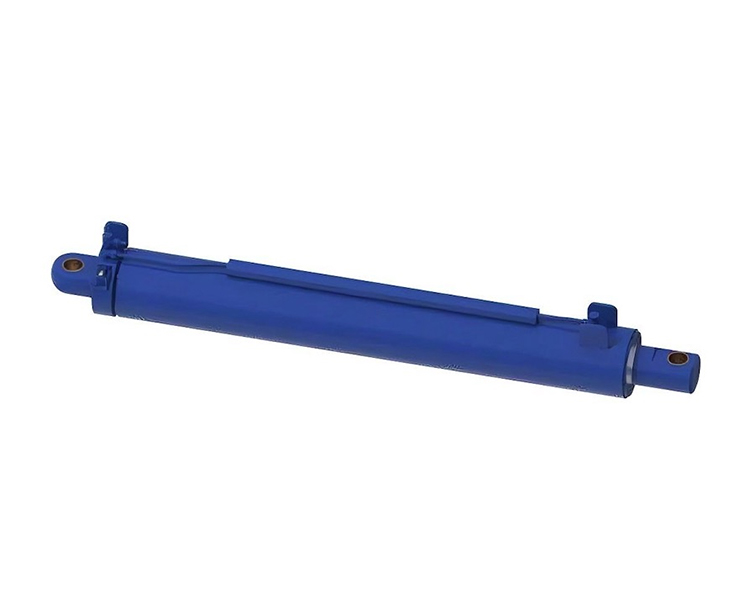- English
- Español
- Português
- русский
- Français
- 日本語
- Deutsch
- tiếng Việt
- Italiano
- Nederlands
- ภาษาไทย
- Polski
- 한국어
- Svenska
- magyar
- Malay
- বাংলা ভাষার
- Dansk
- Suomi
- हिन्दी
- Pilipino
- Türkçe
- Gaeilge
- العربية
- Indonesia
- Norsk
- تمل
- český
- ελληνικά
- український
- Javanese
- فارسی
- தமிழ்
- తెలుగు
- नेपाली
- Burmese
- български
- ລາວ
- Latine
- Қазақша
- Euskal
- Azərbaycan
- Slovenský jazyk
- Македонски
- Lietuvos
- Eesti Keel
- Română
- Slovenski
- मराठी
- Srpski језик
What factors determine the level of working pressure on a hydraulic cylinder?
2025-08-26
When choosing a hydraulic cylinder for equipment, an unavoidable core issue is: How much working pressure can this hydraulic cylinder withstand?
As a professional manufacturer of hydraulic cylinders, we will analyze for you what factors determine the upper limit of the working pressure of a hydraulic cylinder?

1. Material strength: The cornerstone of pressure-bearing capacity
Cylinder barrel: This is the "main battlefield" that bears the internal oil pressure. Its pressure-bearing capacity directly depends on:
Material selection: High-strength seamless steel pipes (such as 27SiMn, 45# steel), forgings or stainless steel are common choices. The yield strength and tensile strength of the material are the core indicators. The higher the strength, the greater the pressure it can withstand under the same wall thickness.
Wall thickness: This is determined based on the working pressure, the inner diameter of the cylinder barrel and the selected safety factor (usually ≥1.5) through strict calculation formulas (often referring to standards such as ISO 6020/2, DIN 24554, GB/T 7933, etc.). The higher the pressure, the thicker the wall thickness required.
Piston rod: It mainly bears push-pull force. When under pressure, stability (bending resistance) also needs to be considered. Materials and strength: High-strength alloy steels (such as 42CrMo and stainless steel) are commonly used, and high yield strength and tensile strength are also required.
Rod diameter: The size of the rod diameter directly affects its cross-sectional area and flexural modulus, and is the key factor determining how much push-pull force it can withstand. If the rod diameter is too small, it may bend or become unstable under high pressure. Surface treatment: The hard chromium coating not only enhances wear resistance and corrosion resistance, but its dense structure also slightly improves surface strength
Cylinder base end/flanges/connectors: These components are subjected to the tremendous separation force and sealing force generated by the oil pressure.
Material strength: It must be high enough, usually matching the cylinder barrel material or using materials with higher strength.
Structural design: Its geometric shape and size design must be able to effectively disperse stress and avoid stress concentration leading to failure.
Seals: Although they do not directly provide structural strength, their materials (such as polyurethane U, nitrile rubber NBR, fluorine rubber FKM, etc.) must be able to withstand the highest working pressure and temperature of the system for a long time. High-pressure seals often require more complex combination designs.
2. Structural design: The framework for pressure transmission
End cover connection method: This is one of the key weak links under high pressure. Different connection methods have their typical pressure application ranges: Threaded connection: Compact structure, often used for medium and small cylinder diameters and medium and low pressure (usually ≤35MPa). The accuracy and strength of thread processing are of vital importance. Flange connection: It features high connection strength, capable of withstanding greater loads and higher pressures (up to 70MPa or even higher), and is the preferred choice for large-bore high-pressure cylinders. Key/ring card connection: It is easy to disassemble and assemble, but its pressure-bearing capacity is usually lower than that of flange connection. Attention should be paid to stress concentration. Pull rod connection: Simple structure, uniform force distribution on the cylinder barrel, but relatively large volume, suitable for long stroke or specific occasions
Piston structure: The design of the piston affects the distribution of pressure within the cylinder barrel and the sealing effect. Integral type vs. combined type: The combined type piston is convenient for installation and sealing, but its structural strength may be slightly lower than that of the integral type. Guiding and sealing layout: A reasonable arrangement of guiding rings (wear-resistant rings) and sealing parts can ensure smooth piston movement, uniform pressure distribution, and reduce eccentric wear, which is crucial for long-term high pressure resistance.
Buffer design: For high-speed hydraulic cylinders, the buffer structure at the end of the stroke (such as throttling buffer) will generate instantaneous high pressure when absorbing kinetic energy. The strength design of the buffer chamber and the buffer plunger must be capable of withstanding such impact pressure. Internal flow channel design: The design of the oil inlet, outlet and internal oil passage should be as smooth as possible, avoiding sharp corners or sudden contraction/expansion to reduce pressure loss and potential local high-pressure points.
In addition to the above key elements, manufacturing technique is also a major factor affecting the working pressure of the hydraulic cylinder. Moreover, the working pressure should also take into account the safety factor of the cylinder and system considerations.
Conclusion
The working pressure that a hydraulic cylinder can withstand, whether it is 10Mpa or 21Mpa or more, is not predetermined by nature but is determined by a series of key factors. If you need more professional advice, please contact us. We will provide you with the highest quality and customized products, meanwhile with our best service.




